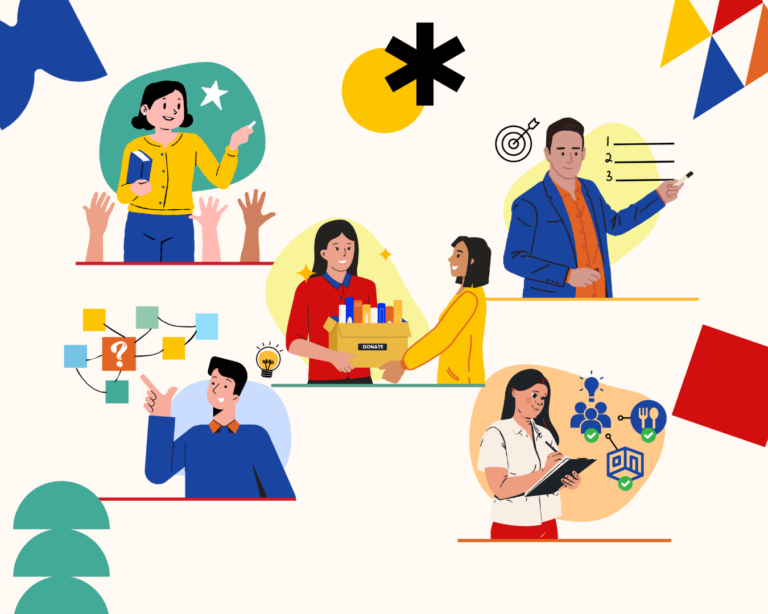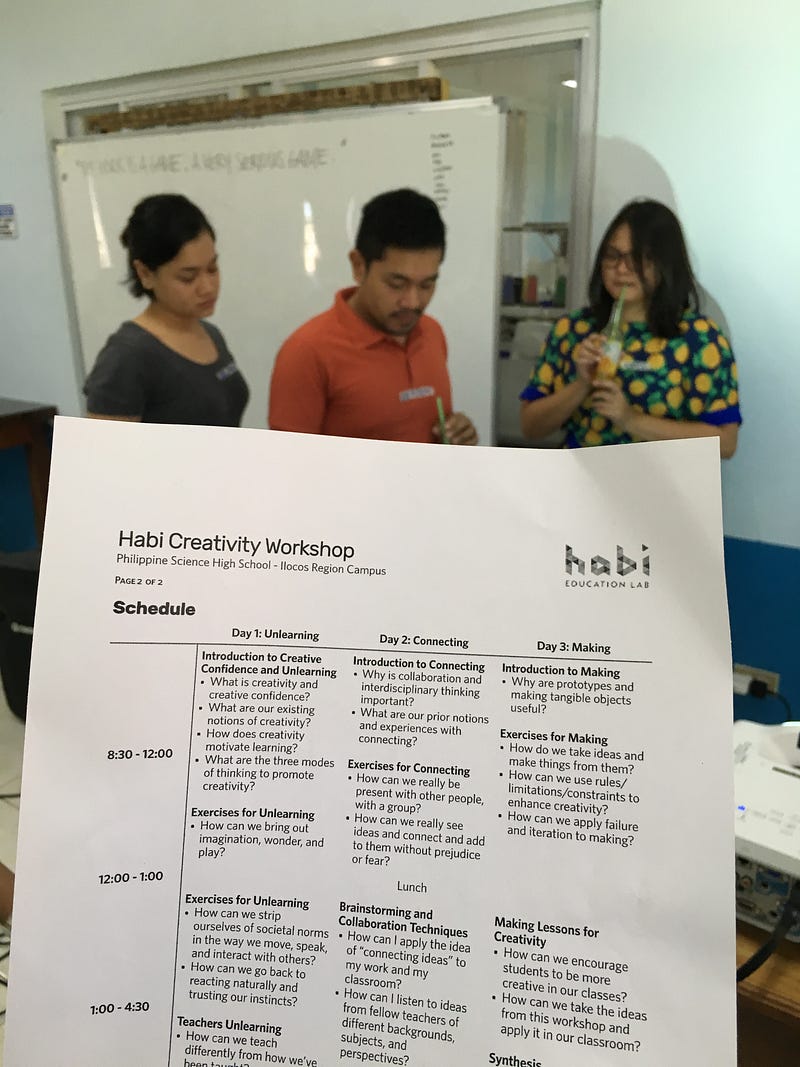
(L-R) Facilitators Delphine Buencamino, Gerson Abesamis and Katty Caragay
A workshop on creativity! You could say it was bound to happen.
Each of the three facilitators is an artist in his own right. Katty is a social scientist who has ongoing pursuits in music, urban farming and alternative medicine. Gerson champions for the inclusion of design and technology in education. Delphine works countless hours as a professional theatre actor and dancer.
The three tapped into their experiences and delivered a workshop on the creative applications of teaching to the faculty of Philippine Science High School — Ilocos Region Campus (Pisay-IRC) last weekend.
We figured that a discussion on creativity would be subject to different interpretations so we agreed on the workshop objectives and themes first. These would serve as anchor points for the activities in the three days.
We came up with two main objectives: (1) to open up new definitions of creativity and (2) to apply creativity into the different subjects.
To accomplish this, we came up with three themes on which we anchored the activities: unlearning, connecting and making.
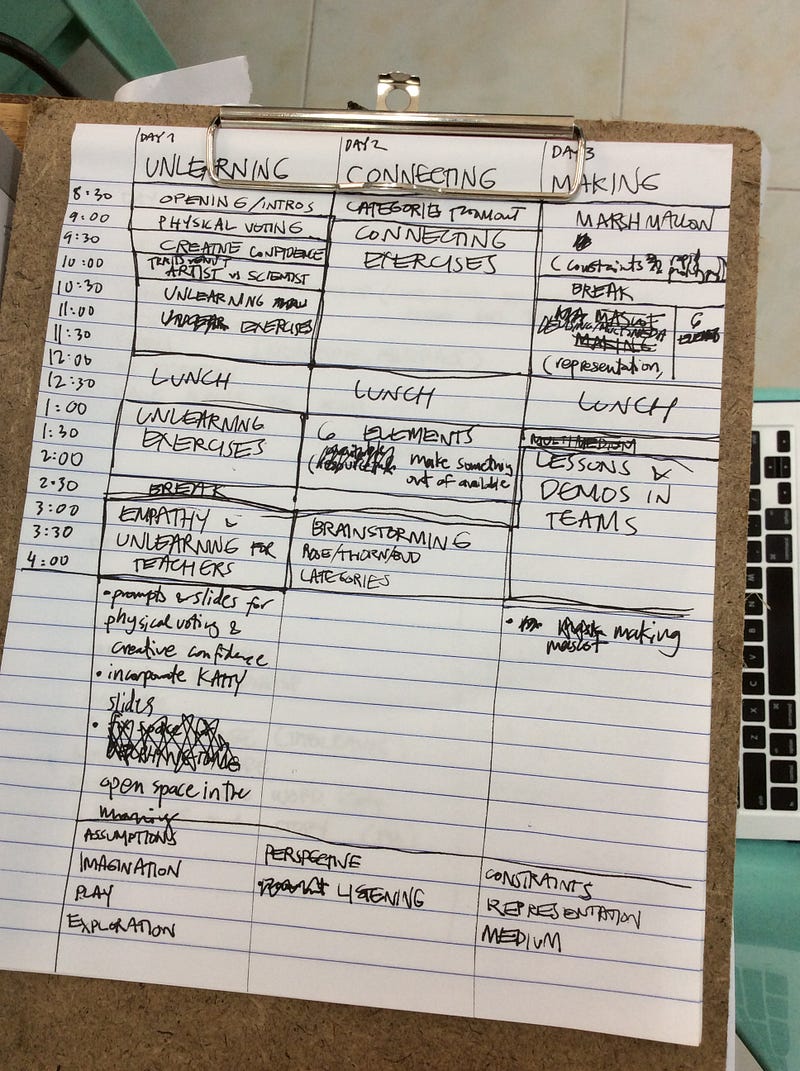
Gerson’s planning notes
We start off with a trademark ingredient in Habi workshops — what does research say about creativity?
Katty discussed the value of creativity in education according to research studies. The teachers are introduced to evidence-based ideas that will also serve as foundation for the activities in the next 3 days. Here are some fascinating insights she shared:
- Environment: While some traits linked to creativity may be innate, the environment can be utilized to foster creativity. Enhanced creativity in the classroom is known to produce positive learning outcomes for students.
- Senses: Creativity can be facilitated through the senses, and can be used to motivate learning through multisensory experiences. Katty mentions synesthesia, a condition which allows some people to fuse senses like smelling music and tasting colors, and that these sensations can be recreated in the classroom.
- Emotions: Creativity can come from emotions, which in turn can appeal to meaningful goals and values of learners. Elements such as humor and surprise can be incorporated into teaching practices. These yield positive emotions that may make information processing more efficient for learners.
Unlearning
Jumping off from Katty’s presentation, the teachers are then invited to allow themselves to explore the unknown. In this part, they must unlearn previous notions and embrace new forms of creativity. In unlearning, teachers are encouraged to leave their judgment at the door by checking their assumptions and being open to new ideas.
We shouldn’t be limited by what we know about creativity, which is a key lesson in Unlearning. Gerson cautioned against sticking to what’s convenient in pursuing creative work. To do this, we must allow ourselves to go beyond what’s comfortable and familiar. Delphine emphasized that the discipline of staying open-minded enables us to see how creativity evolves through different forms — visual, tactile, cognition, spatial, etc.
Listed below are the activities for Unlearning. We made sure to introduce the key ingredients of staying playful and childlike.
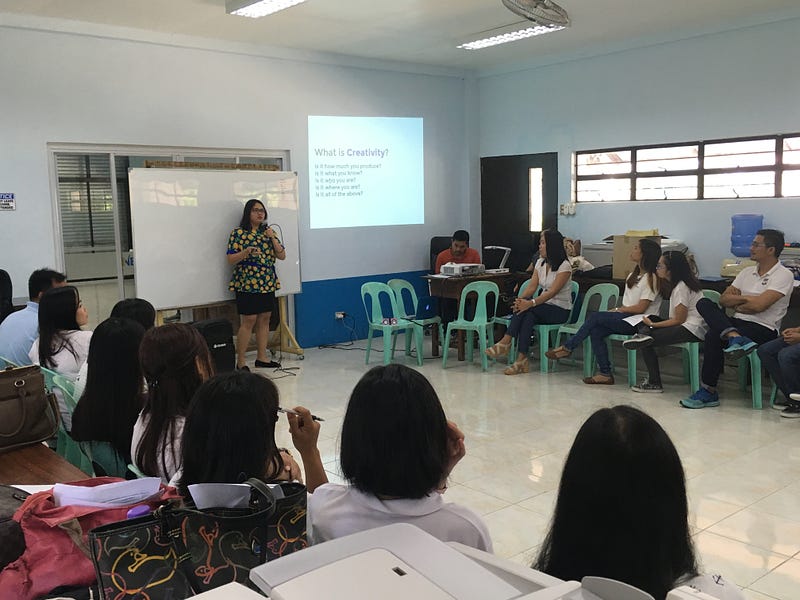
Katty starts the morning off with a talk on creativity
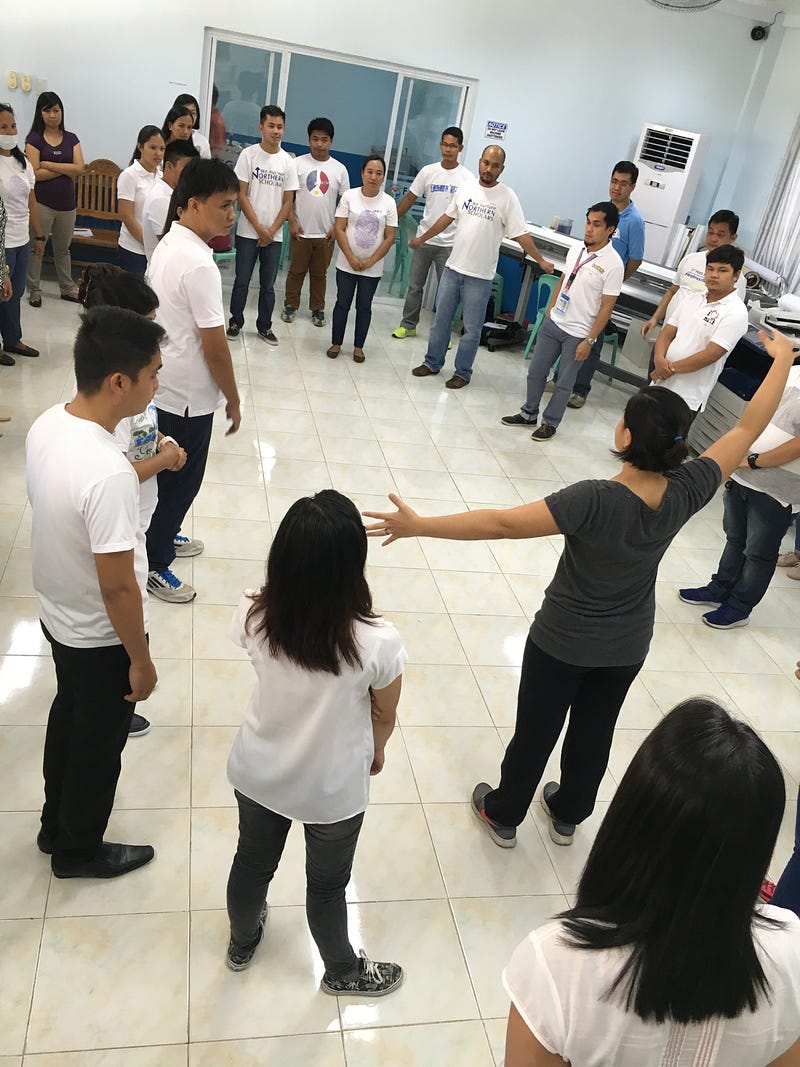
Delphine facilitating an activity
Activities on Unlearning
a. Improvisation exercises — art, music, dance, problem-solving, and theater
b. Empathy walk and empathy mapping
Reflections on Unlearning
On opening up
- One was amazed at how the activities brought out different sides of her co-teachers. She marveled at their creativity and capabilities. “Kakaibang bagay ang nagagawa.”
- One was apprehensive about doing the sculpture game. “Generally, nakakahiya at nakaka-conscious. Throwing yourself out there, parang may inspection.”
- One mentioned that creativity is contagious. “Kapag nakikita ko yung nasa gitna, nagiging creative din ako.”
- One was metacognitive about the whole process — “We can’t learn if we don’t unlearn.”
On bringing it to the classroom
- One immediately saw the activities as new tools for his classroom. “To break stress.”
- One reflected on using empathy as a tool in the classroom. “Mas madali mong maiintindihan yung students. Nakakatulong yung activities kasi ma-feefeel mo rin yung nararamdaman nila.” (translation: You can understand the students better. The activities helped me to understanding what they are feeling.)
- One reflected on some her strategies being outdated. “Baka hindi na suitable.”
- One compared the day’s activities to classroom situations where she mentioned that the teacher and student must be at ease with each other. To be able to do this, the teacher must be quick to accept and understand the student. She used the word “prudence” as she talked about this.
Connecting
Second, they must learn how to integrate and build upon different ideas. Here the teachers are reminded to let their minds and bodies wander freely. It’s difficult to unleash raw creativity if we keep being critical about ourselves and others. The idea behind this theme is to allow teachers to build upon the strengths (and weaknesses, if useful) of each other. As they connect, ideas become richer and hopefully, more creative.
The activities have repetitive elements and may seem redundant at first. Katty clarified that the format is intentional and is meant to encourage constant iteration. To add to this, Gerson indicated that eureka moments aren’t usually planned, it is through these random and repetitive connections that breakthroughs happen.
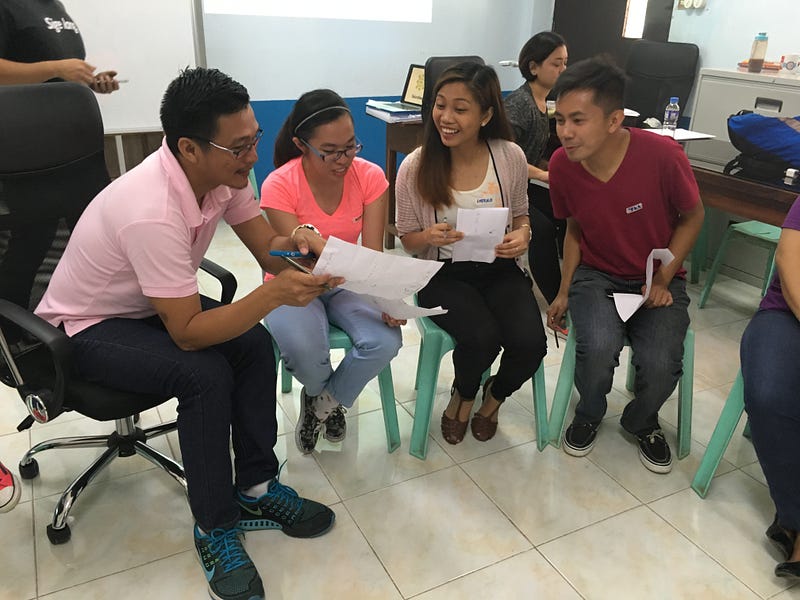
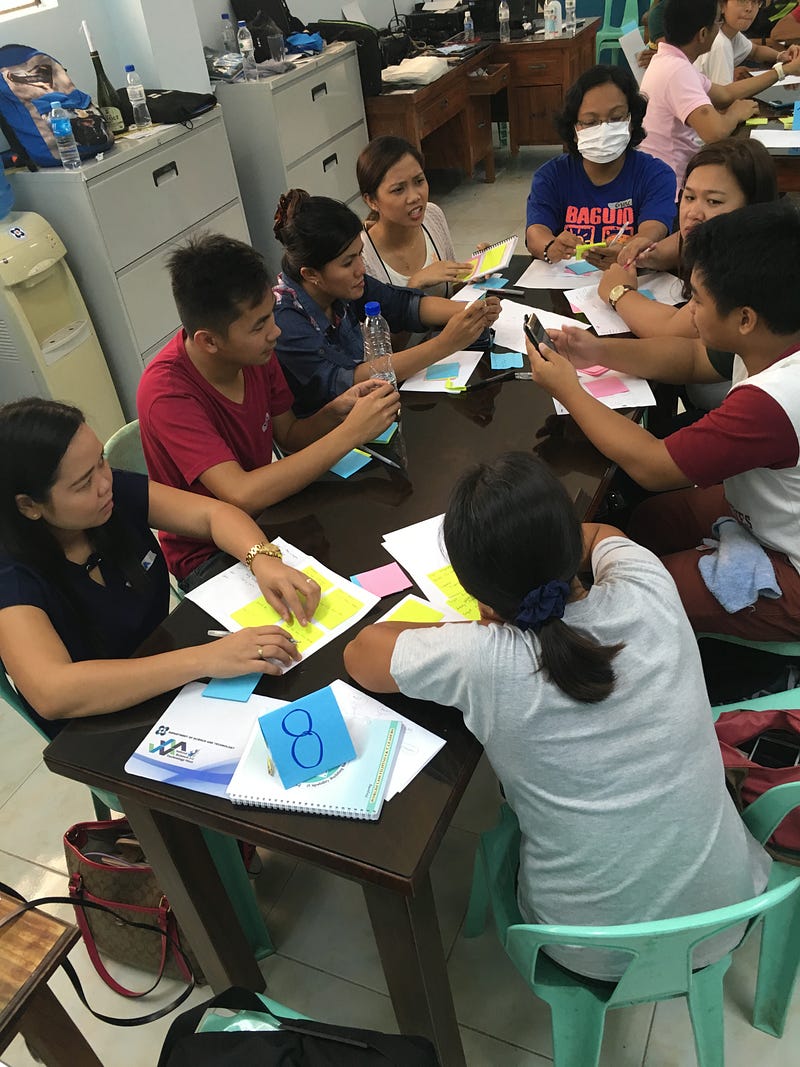
Grade 8 subject teachers brainstorm on possible project ideas
Activities on Connecting
- Word associations, tableau formation, picture painting, building stories
- Brainstorming session on subject integration: PSHS-IRC teachers were grouped into their grade levels to work on subject integration. Habi introduced Bukas-Daloy-Sarado as a format for collaboration. We used 3M Post-Its to collect topics and activities.
Reflections on Connecting
On attitudes towards creativity
- One saw the importance of listening and thinking quickly.
- One emphasized the importance of focus. “Nawawala yung focus kapag mahina yung ibang members sa group.”
- One enjoyed the fact that she could “make something out of nothing.”
On bringing it to the classroom
- A literature teacher saw the importance of connecting in his teaching. “You can’t really impose what you think in the literary texts. Hindi puwedeng pareho kami ng interpretation. I can (only) enhance and validate the interpretations of my students.”
- One appreciated the clear parameters and instructions of the activities, which is something he can take to his students.
Making
You can’t exactly be create-ive without create-ing. The third theme is dedicated to the discipline of bringing ideas to life. Teachers can’t sit in the drawing board all day. We must push ourselves to test our ideas in the classroom. We must imagine how the students would use tools, materials and tests we devise. This way, we are compelled to make something accessible and more importantly, relevant to them.
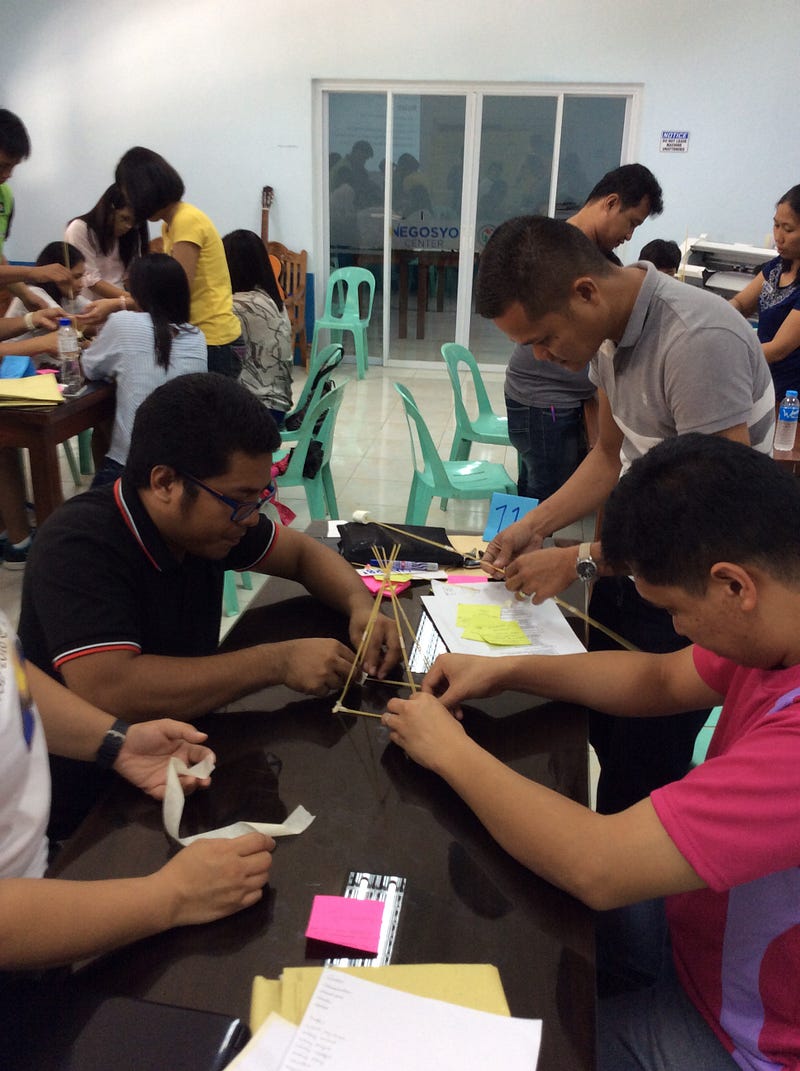
Introductory game for Making: The Marshmallow Tower Challenge
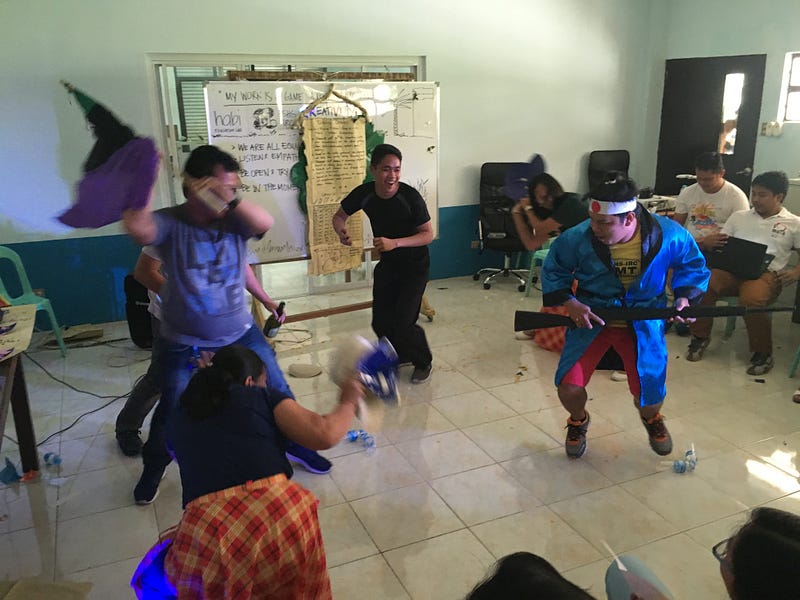
Role reversal: Teachers act as students. We’re trying to imagine how a project output would look like.
Activities on Making
- Project integration: Continuing from yesterday’s brainstorming session, PSHS-IRC teachers used this time to plot out the projects per quarter. There were conversations about subject scope, timing of lessons, and assessment methods.
- Presentations: We allotted 7 minutes per group. The teachers enacted the way they would introduce a chosen project to their respective classes. Next, they demonstrated how the think the students will execute the project.
Reflections on Making
On exercises in empathy
- One reflected that the project presentation is an exercise in empathy. “We had a set time to create an output. The fact that we were able to do it within a reasonable amount of time, we think the students will be able to make it also.”
- One mentioned how important it is to put oneself in the student’s shoes. “It opened my eyes. I have to be more sensitive to my students. I cannot judge them in the 1 hour and 20 minutes I spend time with them. Kailangan tanungin sa sarili: ano nga ba ang ginagawa ng student, bakit ganyan siya, ano ang nakikita niya?”
On bringing it to the classroom
- One mentioned how some subjects are naturally more serious, or “boring”. He takes this as a challenge and will still push to make them creative and interactive.
- One realized how rich the interpretations of his students could be with different topics if he paid more attention. “Mas may matututunan pa ako from them”.
- One was reminded of how the activities showed the importance of collaborative learning in the classroom.
On the facilitators and co-teachers
- One said the activities were able to bring out the best in her. “The facilitators didn’t stop us, and just listened and allowed us to share.”
- One was amazed at the brilliance and childlike innocence of her co-teachers. “Everyone was attentive and focused. Ang ganda pala. Ang galing pala natin lahat.”
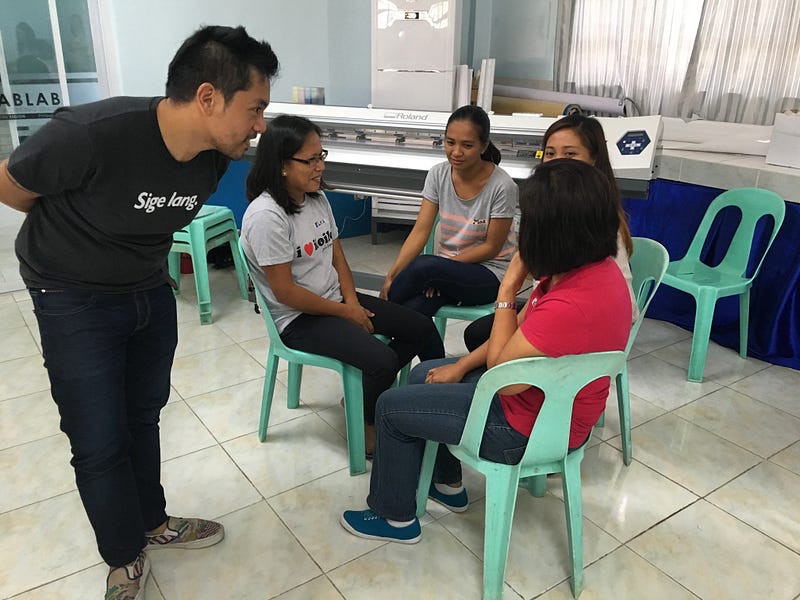
Gerson listening in on group discussions
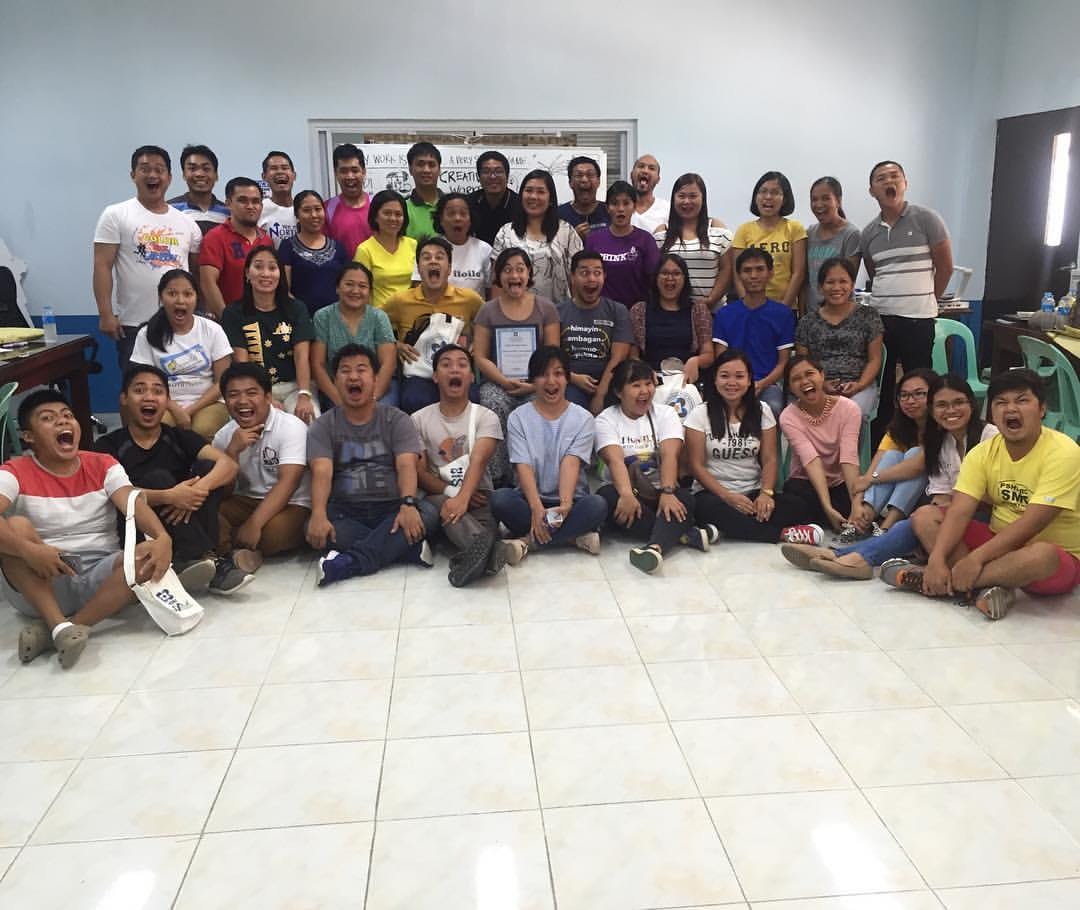
Thank you Pisay-IRC! Sa uulitin! From, the Habi Education Lab family
Here’s a link to the photo album on Habi’s Facebook page: https://www.facebook.com/habieducationlab/photos/?tab=album&album_id=1755740871304690

